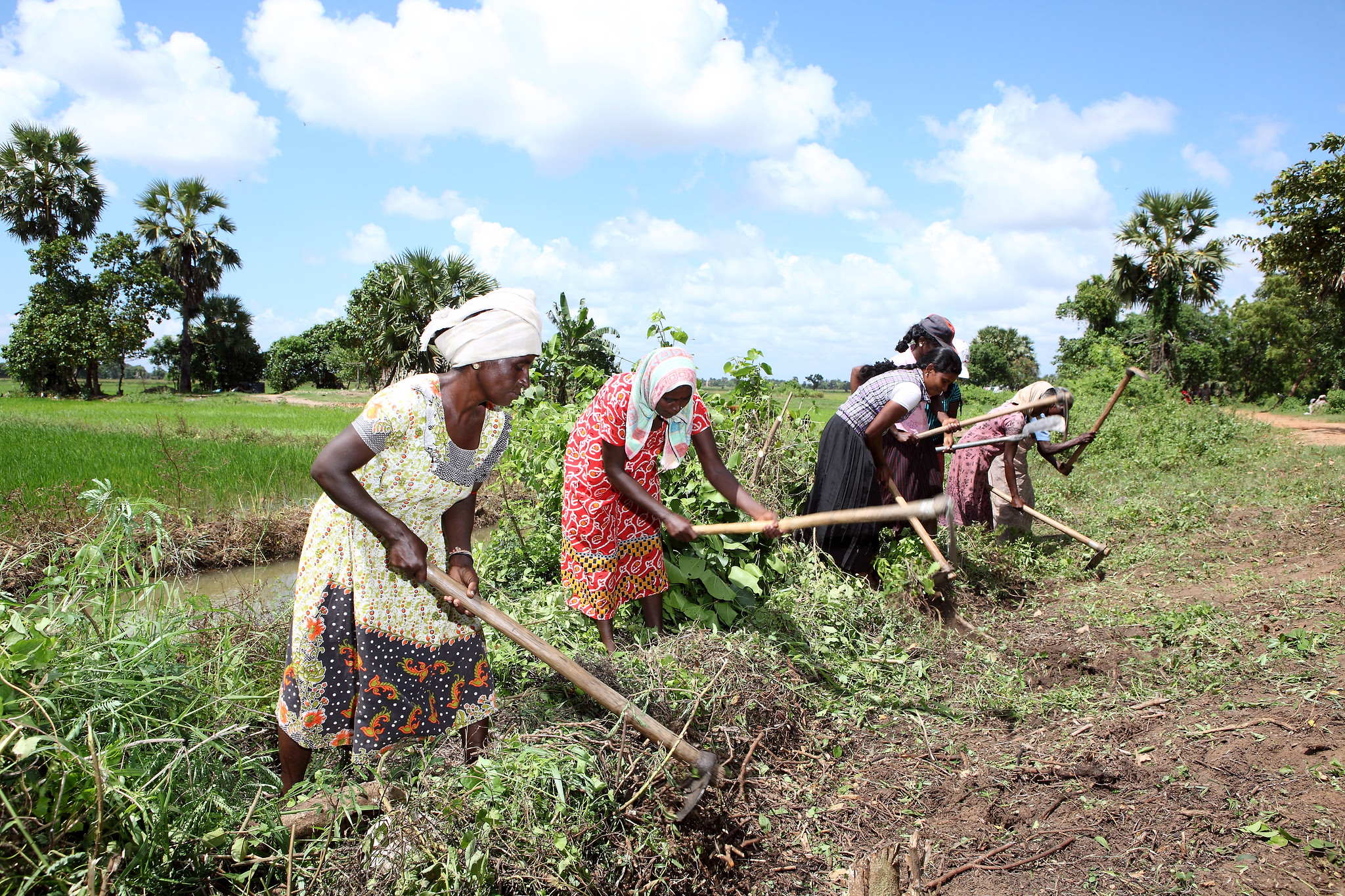Several reports in the past year documented how the Covid-19 pandemic is exacerbating inequalities between women and men in many areas of life, globally. Commentators warn of a significant leap backwards for women everywhere, including in terms of job losses, domestic violence, mental-health problems, and an increasing burden of care work. Growing evidence indicates that women and men from low-income households and socially marginalised groups have borne the brunt of the economic crisis that is associated with the pandemic.
The United Nations and civil society organisations have been calling for solutions to ‘build back better’. But what does this mean in concrete terms for national economic policy-making? How can economic recovery at the national level be made equitable and sustainable? What analytical tools are needed to assess macro-economic policies from a gender equality perspective? How should public spending be prioritised?
Towards more gender-equitable and sustainable policy-making
This month UN Women and the ILO published three policy tools to help tackle these questions. Their joint programme ‘Promoting decent employment for women through inclusive growth policies and investments in care’ aims to offer technical advice and foster capacity strengthening to enable policy-makers and activists to develop analysis that informs gender-sensitive policy responses to the Covid-19 crisis and its aftermath.
These policy tools draw on a long-standing body of feminist literature on economic crises and alternative models of economic development. They provide step by step guides on how to carry out data analysis for use in advocacy and policy formulation concerned with country-level macro and sectoral policies for a gender equitable economic recovery. All three tools take an economy-wide perspective that includes both the paid and the unpaid economy. This perspective is especially relevant for the analysis of crises such as Covid-19, which shift boundaries between which goods and services are produced in the market (and by whom) and which goods and services need to be provided at home (and by whom), with important implications for gender relations and societal well-being.
For instance, how does the intensification of unpaid domestic work and care affect women’s opportunities for stable and secure paid employment? Which groups of workers – and of which gender and age – are able to keep or return to their jobs, or have the time to search for new paid work, when economic activities resume after the crisis? The three tools show how to identify the kind of public policies and infrastructure that need to be prioritised in order to promote decent jobs, to recognise and support all workers as carers, and to ensure that everybody’s care needs are met.
1. Assessing the gendered employment impacts
The gendered employment policy tool offers analytical frameworks and data suggestions to enable measurement of the gender differentiated employment effects of the Covid-19 crisis and to examine the full range of policy options required to promote gender equitable employment outcomes. The tool highlights the need to consider different types of risk when examining the effects on women’s and men’s employment and working conditions, and to document not only job losses, but also the erosion of labour rights (particularly for essential workers) as well as workers’ physical and mental health. Policy formulation must take account of how these effects are experienced differently by women and men in different sectors and occupations.
The gendered employment tool advocates for integrated national policy frameworks rather than narrowly targeted interventions. It shows examples of how national-level economic policies need to combine macro, meso and micro policy areas to address both the demand and the supply side of the labour market and to cover both quantity and quality dimensions. To help prioritise policies depending on socio-economic context and stage of development, the tool develops a taxonomy of countries based on the gendered structure of their economies and provides a menu of options for each policy level.
2. Assessing fiscal stimulus packages
The fiscal stimulus policy tool is more squarely focused on how to design national fiscal stabilisation and stimulus packages, overall. It identifies entry points for both cushioning the impacts of the crisis and for ensuring an economic recovery that is gender equitable and generates decent jobs for all. It examines adequacy of size of fiscal packages and shows how to examine areas of inequality that macro-level policies must target to address gendered impacts of the crisis in both the medium and long term. These areas include livelihoods, social protection, health, food security and public infrastructure.
For each of these areas, the policy tool provides guidance on key questions that need to be asked to evaluate whether specific measures are effective in supporting women and girls. The tool stresses the importance of using qualitative analysis regarding regulatory aspects alongside quantitative indicators on actual expenditures in target areas. Once these questions are thoroughly investigated, gender responsive budgeting can be an important policy strategy for monitoring how fiscal policies are operationalised and implemented, since there can be many obstacles to financial support reaching women and men most in need, even when a stimulus package makes provision for them.
3. A guide to public investments in the care economy
Investing in care or, in other words, ensuring that fiscal stimulus spending supports expansion of health, education and other neglected care service sectors in the longer term, is critical to achieve the twin objectives of gender equality and sustainable economic development. For this reason, the public investments in the care economy policy tool focuses more specifically on methodologies for identifying coverage gaps in care services, estimating the costs of the public investments needed to eliminate these care deficits, and assessing economic returns to such investments in the short and long term. Its main aim is to show how investments in various areas of care provision (including general health, long-term care, early childhood education and others) can be costed, financed and implemented.
The tool demonstrates with various examples how adequate investment in care services can facilitate the narrowing of gender gaps through a multi-pronged mechanism: it not only has the potential to directly generate decent jobs, particularly for women, but is also important for promoting women’s ability to participate in other types of paid work, in community decision-making and in training. Better working conditions and expansion of care sectors might have the added benefit of attracting more men to these professions, thus contributing to the breakdown of gender-based segregation in other ways.
Economics must change
An economic policy agenda that is serious about building back fairer, needs to follow an approach that acknowledges the centrality of care provision to the sustainability of economic systems. Such an agenda needs to recognise that an enabling gender-responsive macro-economic framework is crucial to make things happen at sectoral and micro levels. For all of this to be possible, economics needs to build back better too, by moving away from a narrow focus on market production and exchange, by paying greater attention to how different sources of disadvantage such as gender, race, class and age reinforce each other, and by taking account of qualitative dimensions alongside dimensions that can be quantified.
Marzia Fontana is the author of the UN Women-ILO policy tool titled ‘Assessing the gendered employment impact of Covid-19 and supporting a gender-responsive recovery: a country-level policy tool’. This blog was first published on the IDS website.
Image credit: Lakshman Nadaraja/World Bank via Flickr, CC BY-NC-ND 2.0

